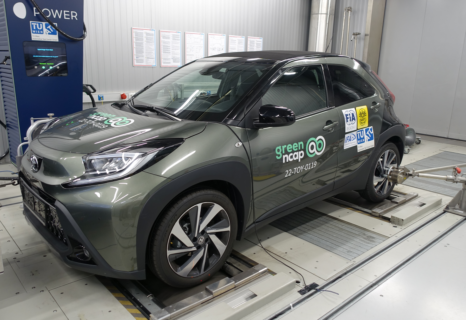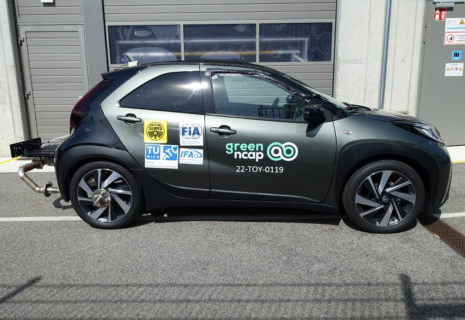Toyota Aygo X 53 kW petrol FWD manual
2022
56%
6.2
10
Clean Air Index
6.0
10
Energy Efficiency Index
4.8
10
Greenhouse Gas Index
| Laboratory Tests | NMHC | NOX | NH3 | CO | PN | |
|---|---|---|---|---|---|---|
| 6.410 | Cold Test | |||||
| 8.110 | Warm Test | |||||
| 8.010 | Highway | |||||
| 0.010 | Cold Ambient Test | |||||
| Road Test | ||||||
| 7.410 | On-Road Drive | |||||
| 2.75 | On-Road Short Trip | |||||
| 5.48 | On-Road Heavy Load | |||||
| 4.15 | On-Road Light Load | |||||
| 2.02 | Congestion | |||||
| Laboratory Tests | Energy | |||
|---|---|---|---|---|
| 6.510 | Cold Test | |||
| 6.710 | Warm Test | |||
| 5.010 | Highway | |||
| 5.910 | Cold Ambient Test | |||
| Consumption | Driving Range | |||
| Average | 5.5l100 km | 643km | ||
| Worst-Case | 7.1l100 km | 491km | ||
| Greenhouse Gases | CO2 | N2O | CH4 | |
|---|---|---|---|---|
| 5.510 | Cold Test | |||
| 5.710 | Warm Test | |||
| 3.510 | Highway | |||
| 4.810 | Cold Ambient Test |
Specifications
- Tested Car JTDAGNAC50000XXXX
- Publication Date 08 2022
- Vehicle Class City and Supermini
- Emissions Class Euro 6d AP
- Tyres 175/60 R18
- Mass 981 kg
- Engine Size 998 cc
- Power/Torque 53 kW/93 Nm
- Declared CO2 110 g/km
- Declared Consumption 4.9 l/100 km








































































































































Our verdict
Toyota's Aygo X is a super mini urban SUV with relatively low power, mostly targeting the younger audience. The consumption figures are moderate and depend greatly on driving style, whereas the demand for petrol can vary from 3 to 7 l/100 km. The greenhouse gas index is related to the consumption and any fuel saving measure will also increase its score of the currently modest 4.8/10. Pollutant control is good in most cases, but additional effort is needed to prevent high emissions under cold ambient conditions. The score for the Clean Air Index would also benefit from measures to reduce particle output. Overall, the Aygo X finishes with a weighted index of 5.6/10 and confidently collects 3 Green Stars - a creditable result for a naturally aspirated petrol-engined car.